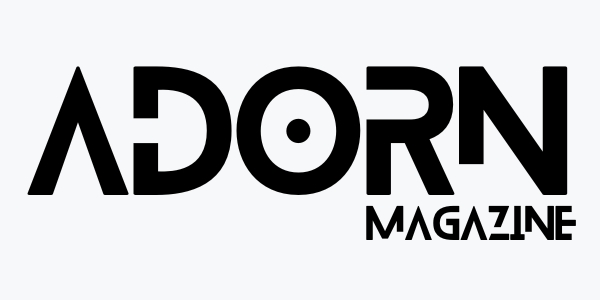Prologue: The Architecture That Whispers
If software is the nervous system of the digital world, then architecture is its blueprint — invisible to most, essential to all. In the thicket of buzzwords and bleeding-edge jargon, a phrase has begun surfacing in conversations that matter: SOA OS23.
It doesn’t scream like “AI,” or promise quantum leaps like “blockchain.” But for the coders, architects, and CTOs tucked in server rooms and boardrooms alike, SOA OS23 is a seismic shift—an architectural language wrapped in the subtlety of innovation. This isn’t a gadget or an app. It’s not something you can download. It’s a framework. A philosophy. A future-proof handshake between scalability, resilience, and design elegance.
Let’s dive in.
What Exactly Is SOA OS23?
Let’s unpack the acronym first.
-
SOA stands for Service-Oriented Architecture.
-
OS23 is the evolved specification, or standard, of an open system framework released (and iteratively refined) in 2023.
SOA OS23 isn’t just a version update. It’s a manifesto for how distributed systems should behave—flexibly, interoperably, and securely—in a cloud-native, API-driven world.
At its core, SOA OS23 redefines how services communicate, share data, and evolve independently in digital ecosystems. It’s about loosely coupled services that can be deployed, scaled, or even replaced without bringing down an entire application.
While SOA has been around since the early 2000s, SOA OS23 represents its renaissance—where microservices, DevOps, edge computing, and even AI agents now interoperate more intuitively than ever before.
From Rigid to Fluid: The Evolution to OS23
SOA OS23 didn’t materialize in a vacuum.
Early SOA frameworks were often too rigid, drowning in SOAP messages, XML overhead, and enterprise sluggishness. They promised agility but delivered bureaucracy.
Then came the age of microservices. The industry pivoted. RESTful APIs, containers, Kubernetes. The modern stack was born.
But something was lost in translation.
As systems grew more fragmented, integration became a nightmare again. Services didn’t just talk—they gossiped in dialects. Teams spent more time gluing components than creating value.
SOA OS23 answers this fragmentation. It’s the Esperanto of service integration—a universal schema layered atop cloud-native principles. It harmonizes legacy SOA best practices with the nimbleness of modern microservices, introducing:
-
Intelligent service orchestration using AI meta-routing
-
Autonomous service discovery via zero-config registries
-
Event-driven adaptability to support real-time systems
-
Policy-first governance with embedded security layers
It’s not just technical. It’s philosophical. SOA OS23 isn’t about building faster; it’s about building better—smarter, and with systems that don’t crumble under complexity.
SOA OS23 in Action: Use Cases That Matter
🚀 Enterprise Replatforming
For legacy-heavy giants like banks and insurance firms, the idea of rebuilding from scratch is financially and operationally terrifying.
SOA OS23 allows gradual modernization—wrapping existing monoliths in modular, service-based APIs. An old COBOL-based loan engine, for example, can coexist with a slick React front-end, thanks to OS23’s interoperability layer.
🏥 Smart Healthcare Infrastructure
With the explosion of patient data and digital health devices, healthcare systems are overwhelmed. SOA OS23 enables secure service mesh architectures, allowing labs, hospitals, insurers, and pharmacies to share data in real time without centralizing it—supporting zero-trust principles and HIPAA compliance.
🛰 Edge-Cloud Synergy
IoT and 5G have moved computation to the edge. SOA OS23 introduces context-aware service registries, so decisions can be made locally, while the cloud provides analytics muscle. Think: autonomous vehicles talking to nearby infrastructure using OS23-compliant protocols.
The Core Principles of SOA OS23
To understand SOA OS23 is to understand its tenets:
1. Service Legibility
Every service in an SOA OS23 ecosystem must declare its capabilities in human-readable and machine-parsable ways. This means smart service contracts, embedded JSON schemas, and interactive metadata.
2. Event-First Orchestration
Rather than reactive APIs, services proactively emit and subscribe to event streams. This enables loosely coupled choreography over rigid pipelines.
3. Autonomous Upgradability
Each service must be designed to upgrade independently, avoiding the dreaded “domino deployment” where one update crashes the entire system.
4. Zero-Latency Discovery
A major innovation in OS23 is its ambient service registry—a mesh-native layer that lets services auto-discover each other based on tags, geolocation, or load state.
5. Policy as Code
SOA OS23 embeds policy layers that enforce compliance, rate limits, and authentication at the fabric level—not just in the app code.
Why SOA OS23 Isn’t Just Another Buzzword
Let’s address the cynic in the room.
Is SOA OS23 just “old wine in a new bottle”? A dressed-up version of microservices in a slicker pitch deck?
Absolutely not.
It’s a synthesis, not a remix.
It absorbs the best of traditional SOA—like formal contracts, service registries, and orchestration—and melds it with modern dev culture—like CI/CD pipelines, API gateways, and serverless computing.
More importantly, it aligns with organizational agility. In a world where startups disrupt and incumbents adapt, SOA OS23 provides technical glue and architectural foresight.
SOA OS23 vs Other Frameworks
| Feature | SOA OS23 | Microservices | Traditional SOA |
|---|---|---|---|
| Discovery | Smart, registry-free | Manual or via service mesh | UDDI/Registry |
| Orchestration | Event-first, AI-routed | Endpoint-based | WS-BPEL |
| Governance | Policy-as-code native | External tools | Often manual |
| Flexibility | High | High | Medium |
| Scalability | Built-in observability | Container-based | Often requires refactoring |
| Security | Mesh-native encryption | Plugin-based | SOAP-level encryption |
Verdict? SOA OS23 isn’t replacing microservices—it’s augmenting and organizing them.
Voices from the Field: What the Experts Say
“SOA OS23 is like Kubernetes for service architecture. It takes the chaos out of service management.”
— Carmen Liu, Chief Architect, HexaCore Technologies
“We modernized our digital infrastructure without throwing away our legacy codebase. That’s what OS23 gives you: continuity.”
— James Edey, VP Engineering, NovaBank
“Most systems are either too loose or too tight. OS23 found that Goldilocks zone.”
— Ines Torres, DevOps Engineer, MetaLoop
Why Now? The Timing of SOA OS23
The timing of SOA OS23’s rise is no coincidence.
-
Post-pandemic digital acceleration has pushed companies to modernize faster than ever.
-
Hybrid workforces mean systems need to be both secure and globally accessible.
-
Data regulation laws (GDPR, HIPAA, etc.) require governance baked into architecture—not bolted on.
-
And finally, AI and automation demand modular, testable systems for model integration.
SOA OS23 is the blueprint that meets this moment. A silent revolution, until you realize how loudly it echoes in modern systems.
The Road Ahead: What’s Next for SOA OS23?
As of 2025, the OS23 standard is already being adopted by major players in finance, telecom, and health tech. But the real promise lies in its open-source governance model. The OS23 foundation invites contributions and feedback, ensuring the standard evolves with technological shifts—not against them.
Here’s what to watch:
-
OS23.1, due in late 2025, will introduce native AI orchestration hints for predictive routing.
-
A low-code interface layer is being developed for non-technical users to interact with OS23 service graphs.
-
Green computing integrations are in progress to align with ESG and sustainable tech standards.
Final Thoughts: Invisible but Indispensable
SOA OS23 might never trend on TikTok. It may never feature in Apple’s keynote or get a flashy booth at CES. But its fingerprints will be all over the systems that run our lives.
From that app you use to order groceries to the cloud engine crunching your biometric health stats, SOA OS23 is the invisible backbone of digital reliability.
In a world obsessed with newness, OS23 is quietly redefining what it means to build well.
Not faster. Not trendier. Just better.






